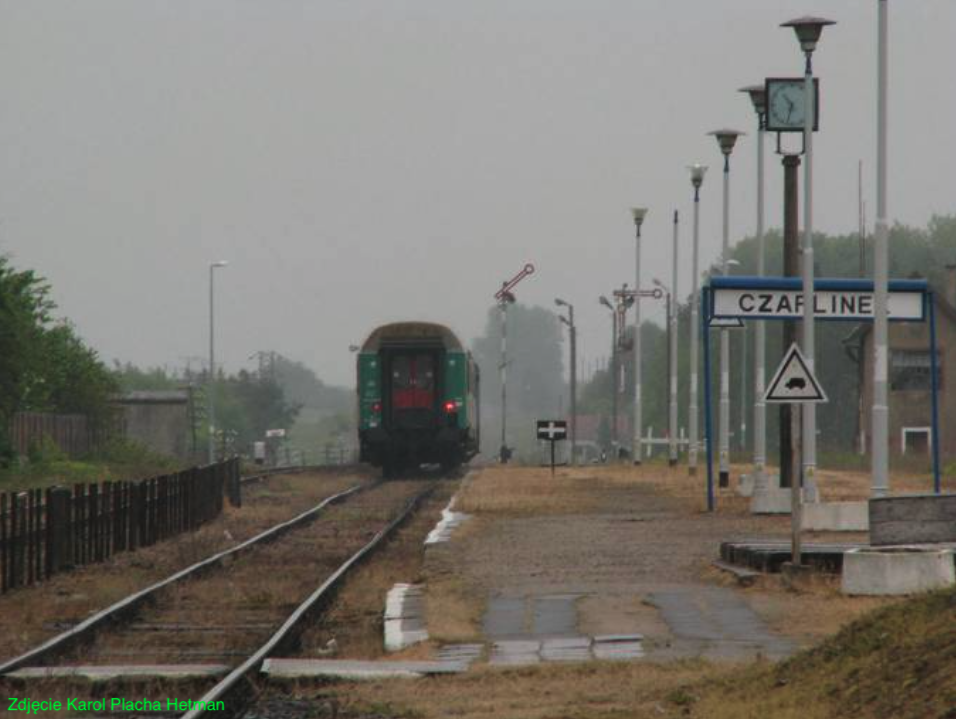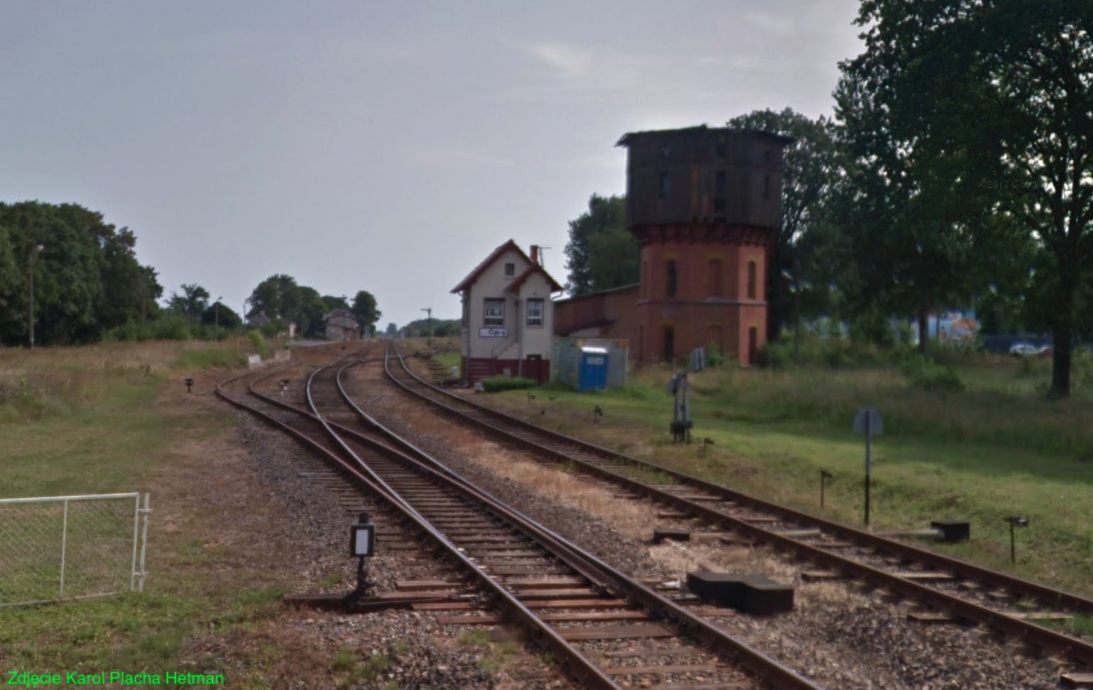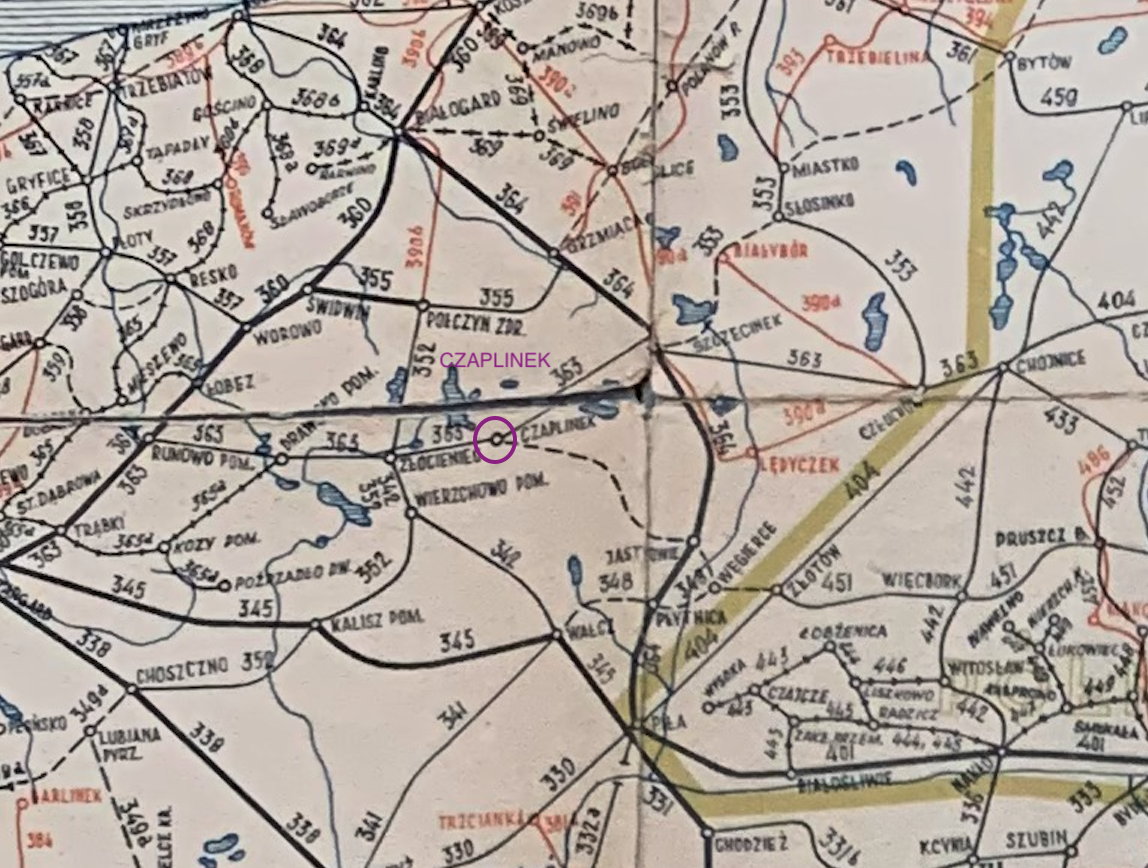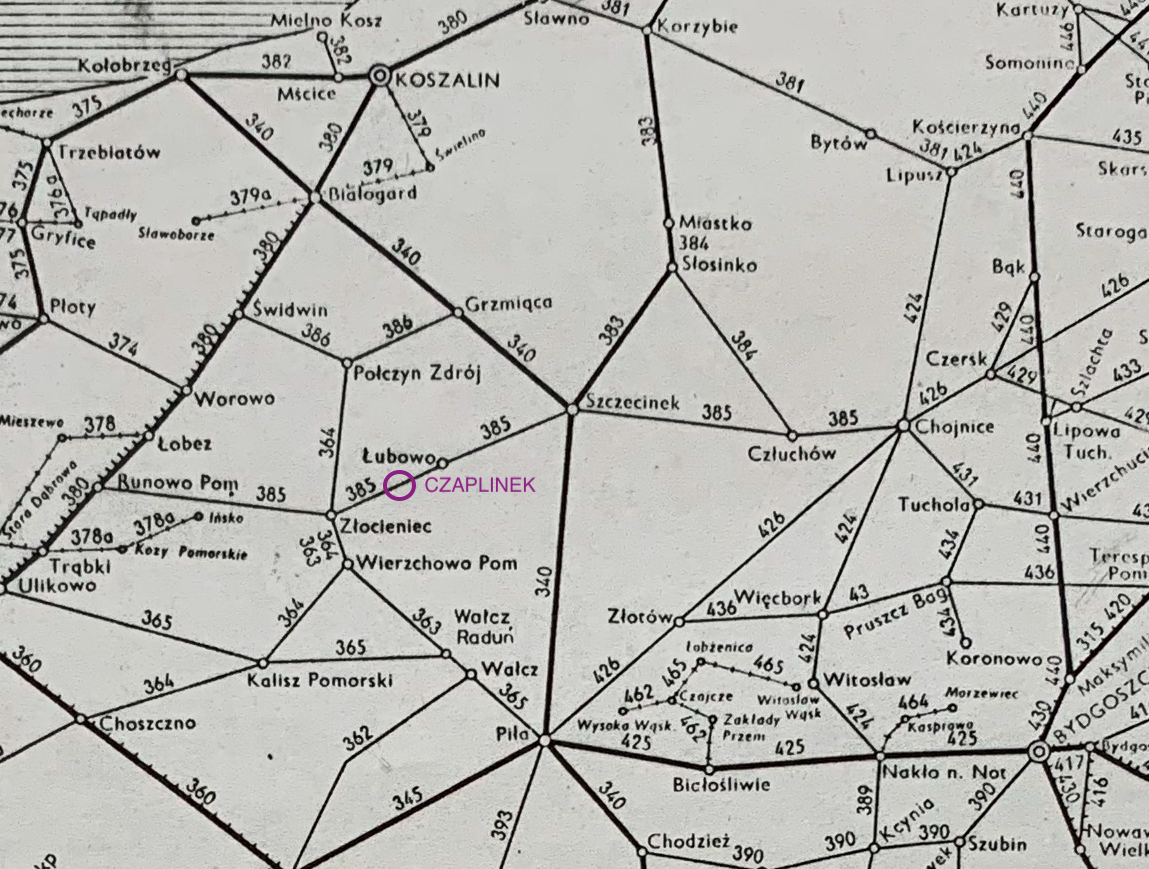Czaplinek 2024-01-02
Czaplinek railway station.
Geographic coordinates: 53.537N 16.239E. Elevation 145 m.




Let's be clear at the beginning. If the Germanic army had not started World War II, the Germans would still be peacefully traveling from Berlin to Königsberg to their Muscovite brothers. Over a beer, they reminisce about the good old years and go on sentimental journeys, often renting Retro trains in Poland. Germanic people are conceited people who treat other nations with superiority. They oppress their weakest citizens. They were the first in the world to introduce eugenics and concentration camps. With their national characteristics, they are close to Muscovites.
The Czaplinek railway station was built in the second half of the 19th century, when the Prussians started building the Ostbahn network. The concept of building the Ostbahn network was created in 1842. However, different concepts clashed regarding the routes and, above all, its financing. The Ostbahn was to connect the Prussian areas east of Berlin with the cities of Gdańsk, Königsberg (Królewiec), Bromberg (Bydgoszcz), Thorn (Toruń) and the cities of Eydtkuhnen and Alexandrowo (Aleksandrów Kujawski), on the border with Russia. The classic Ostbahn route was to run from the old Berlin Ostbahnhof at Küstriner Platz through Küstrin (Kostrzyń), Kreuz (Cross), Schneidemühl, Dirschau and Königsberg (Prussia) to Eydtkuhnen on the Prussian-Russian border.
The main idea was to connect Berlin with Moscow and St. Petersburg. Although the goals of both empires were never entirely the same. Officially, the Ostbahn was built to connect Berlin with Königsberg (now Kaliningrad) and further east. The Prussian part of the railway was to end in Ejtkunami (now Chernyshevskoye). Geographic coordinates 54 degrees 38 minutes N 22 degrees 44 minutes E. Next, the railway of the Russian Empire was to be built. The Prussian, main part of the railway route was to be from 790 km to 810 km, depending on the chosen variant of the line route.
One of the fragments of the Ostbahn railway network is currently the railway line No. 210 Chojnice - Runowo Pomorskie.
Railway line No. 210 Chojnice – Runowo Pomorskie.
Railway line No. 210 Chojnice - Runowo Pomorskie runs in a latitudinal direction, is 150.402 km long, with a rail gauge of 1,435 mm. The line lies in the Pomeranian Voivodeship and the West Pomeranian Voivodeship.
Line No. 210 is double-tracked, and in some sections it is single-tracked, because in 1945, the Muscovites took the tracks to Moscow. In the 1950s, the missing tracks were completed. The single-track sections are; Czarne - Szczecinek (the second track was demolished in 1991) and within the Runowo Pomorskie railway station. The line is unelectrified because the line is not of great importance for the Polish national economy. The maximum speed on the trail is 120 km/h and there are no plans to increase it. The route is used by freight trains and passenger trains.
History of railway line No. 210.
The line, approximately 150 km long, was opened in sections in 1877-1878. The line was built as single-track. The second track was added in the period 1900-1905.
In the period 1870-1873, Prussia experienced an economic boom, which was the result of the contribution paid by the French Empire after losing the war. A significant part of the money was allocated to investments and new companies and partnerships were established. The town of Złocieniec (then Falkenburg) took advantage of the boom. Textile factories and brickyards were established in the city. The plan to build a railway line attracted further investors. In such conditions, a joint-stock company was established and began the construction of the Runowo Pomorskie - Chojnice railway line. The company adopted the name Pomorska Kolej Centralna.
Unfortunately, in 1873, there was a crash. The increase in production caused fierce, cutthroat competition and a decline in stock values. The company that was building the railway line from Runowo ran into payment difficulties and its management declared bankruptcy. The shareholders, including residents of Złocieniec, Czaplinek and Drawsko Pomorskie (then Dramburg), suffered losses. Abuse, mismanagement and corruption were exposed. The engineering staff was unskilled. The workers did not receive wages. The case went to court. Construction of the line was suspended for several years. It was only in 1877 that the Prussian state finally financed the completion of the investment.
On November 1, 1877, the first train officially arrived at the station in Drawsko. The city gained a railway connection with Szczecin, Berlin and Hamburg. New prospects for the development of trade, industry and crafts were created. In 1900, Złocieniec received a railway connection with Kalisz Pomorski, and in 1903, a connection with Połczyn Zdrój (currently, there is a bicycle path along the entire length of the route between Złocieniec and Połczyn, which has been closed for years). Złocieniec became a railway junction. In 1900, a narrow-gauge railway from Wierzchów to Wałcz was also launched.
In 1945, the Muscovites took many kilometers of tracks to Moscow. In the 50s, two tracks were reconstructed along their entire length. This was Moscow's order due to the need to supply Soviet military bases in Poland and the GDR.
Due to poor technical condition and lack of funds, in 1991, the second track on the Szczecinek - Czarne section was dismantled. It was the decision of the then director of DOKP in Szczecin. In 2002, on the Łubowo - Szczecinek section, traffic on one of the tracks was suspended and it was scheduled for renovation. The technical condition of some engineering structures meant that the train speed had to be limited to even 30 km/h.
In 2015, after the change of government in Poland to the United Right, work began on restoring railway traffic on many closed railway routes. This revitalization program included railway line No. 210. Several stations and passenger stops were modernized. Many kilometers of tracks were renovated. Renovation work was undertaken on many bridges, viaducts and culverts. Among other things, the bridge over the Gwda River, between Szczecinek and Czarne. Rail and road crossings were renovated. New railway traffic control devices were installed. The speed of passenger trains was increased to 120 km/h.
Czaplinek – Jastrowie railway line.
The Czaplinek - Jastrowie railway line was launched on October 1, 1908, i.e. before the Great World War. The line was single-track, 45,830 km long. In 1945, the line was dismantled by the Muscovites and was never rebuilt.
The line ran along the provincial road No. 163. From the east it bypassed the town of Broczyno. Then it moved away towards the east. Then it ran through the current 21st Central Aviation Training Ground. The line reached the Jastrowie station from the south. Stations and stops on the line: Broczyno - Miłkowo - Motarzewo - Turze - Nadarzyce - Kłomino - Sypniewo - Ciosaniec Pomorski - Brzeźnica - Samborsko.
Czaplinek railway station.
The railway station in Czaplinek is located in Drawsko County, West Pomeranian Voivodeship. The Czaplinek railway station (Tempelburg in Prussian times) is located 2 km from the city center, towards the south. Throughout its history, Czaplinek station was a junction station. The railway line No. 210 Chojnice - Runowo Pomorskie and the former Czaplinek - Jastrowie railway line run through the station.
Until 2019, there were two platforms at the station, which had three platform edges. At the station there is a station, warehouses, a water tower (unused), a small locomotive shed (unused), a loading yard and two signal boxes "Cp" on the Łubów/Jastrów side and "Cp1" on the executive side on the Złocieniec side. There were shaped semaphores at the station.
Throughout its history, the station had an underpass for passengers. But it was flooded and was permanently closed by laying concrete slabs. This crossing was not renovated and during the renovation in 2019, it was filled in.
On October 14, 2016, a tender was announced for the revitalization of railway line No. 210 on the Szczecinek - Runowo Pomorskie section. The modernization works were divided into stages. The construction of new passenger stops is planned. The work was undertaken in a design-build manner. Track No. 2 on the Łubowo - Szczecinek section, closed since 2002, was also rebuilt. As a result of the works carried out, the speed of passenger trains increased to 120 km/h and freight trains to 100 km/h.
In 2019, the Czaplinek station was modernized. The track system was completely rebuilt. Most of the additional tracks were eliminated. Two main tracks were left, at the new, only island platform, and two additional tracks. The platform is now high, with prefabricated slabs at the edges. The length of Platform 1 is 200 m. There is no roof on the platform. The control system has been modernized. One "Cp" signal box was left. The "Cp1" signal box was closed and protected against destruction. Light semaphores have been installed. A safe entrance to the platform was built at track level. Ticket offices at the station have been closed. A waiting room is available to travelers.
In 2010, the station served up to 150 passengers per day, and in 2023, the station served up to 300 passengers per day. In January 2024, 14 passenger trains departed from the station. You could go to: Miastko, Runowo Pomorskie, Szczecin Główny, Szczecinek. All reports are handled by PolRegio.
Written by Karol Placha Hetman
